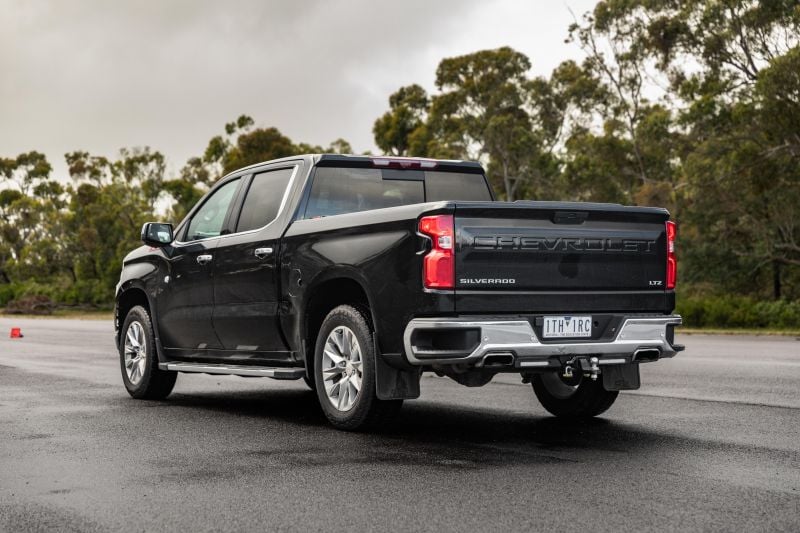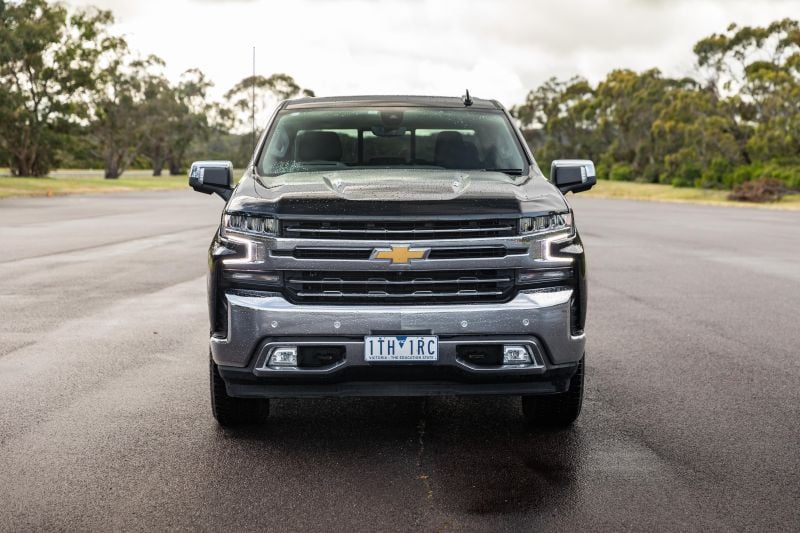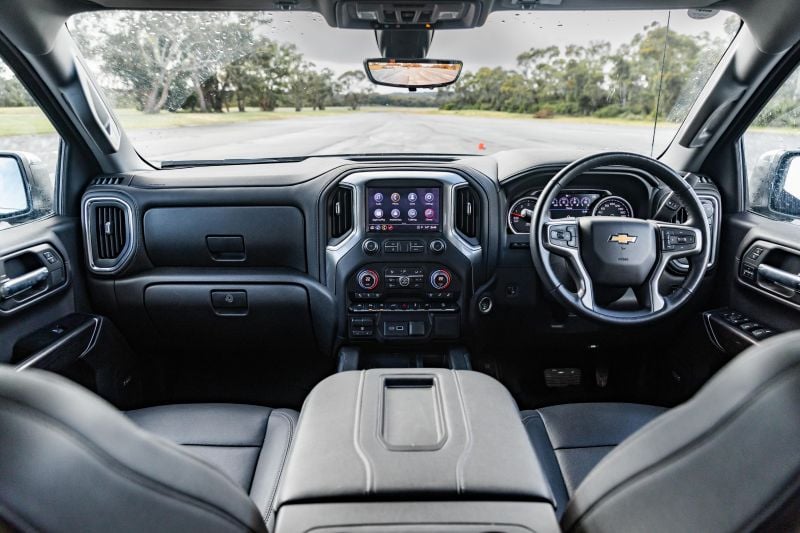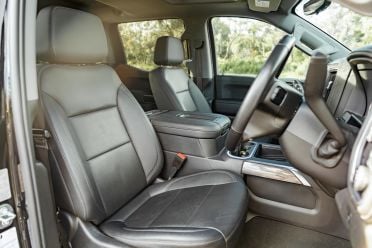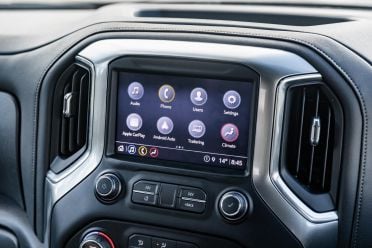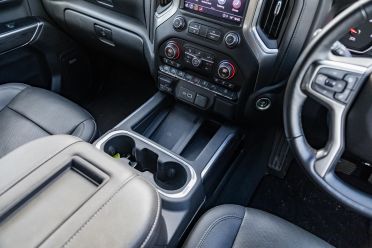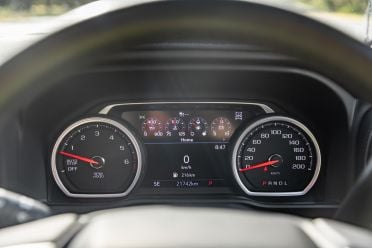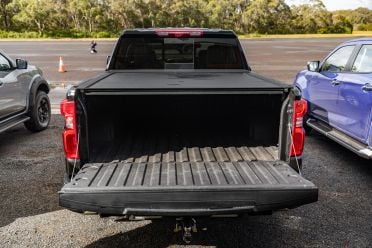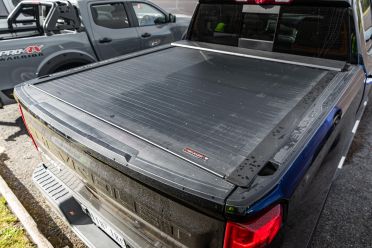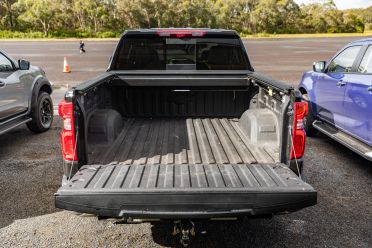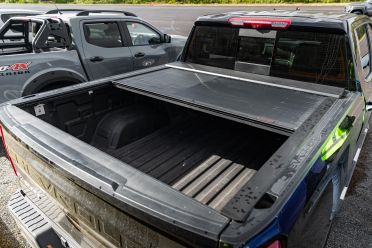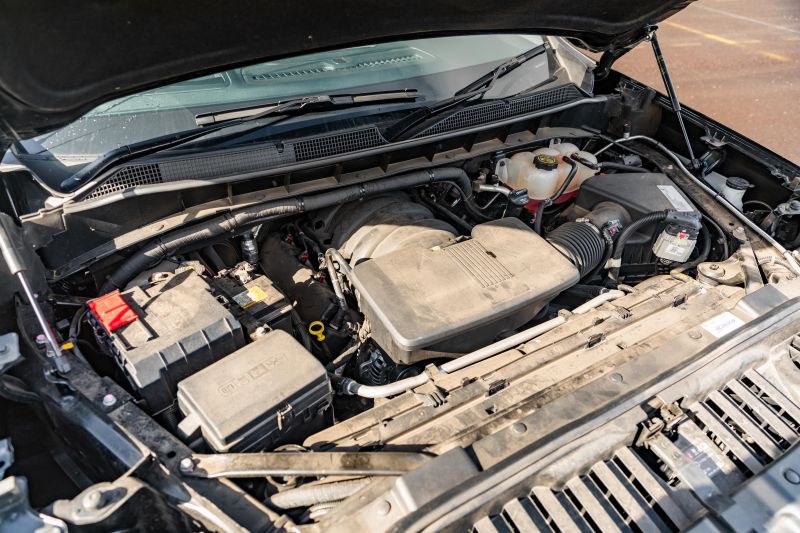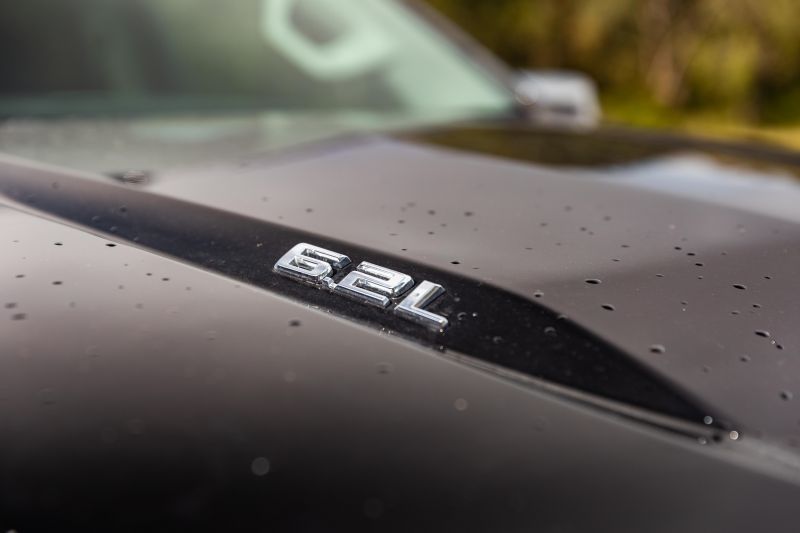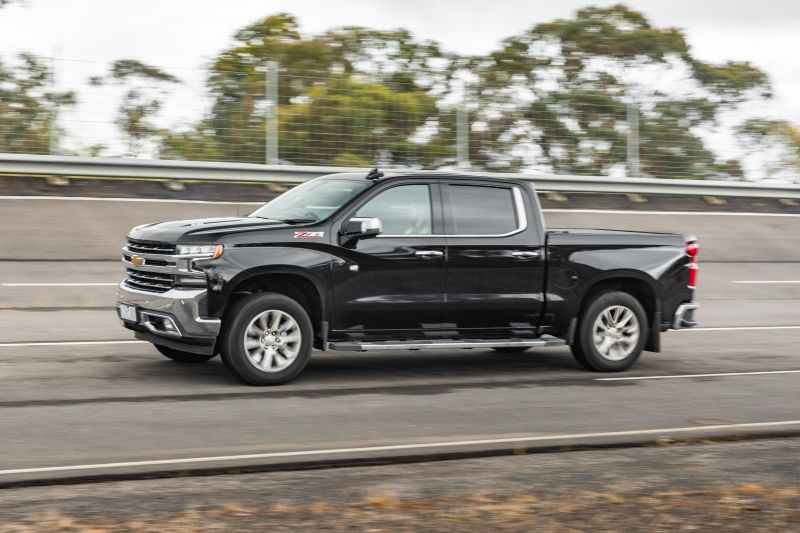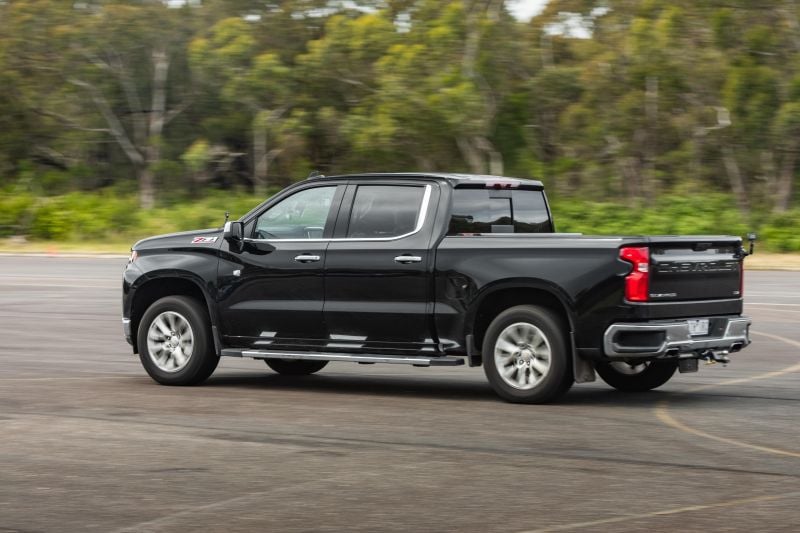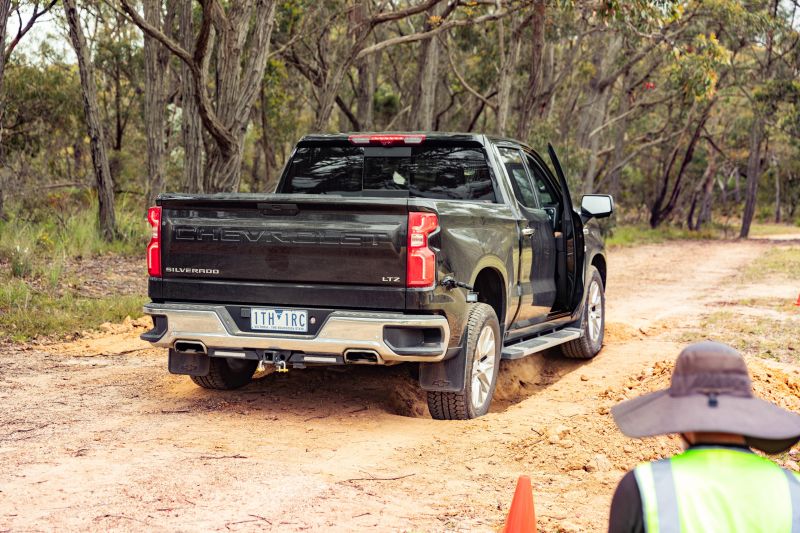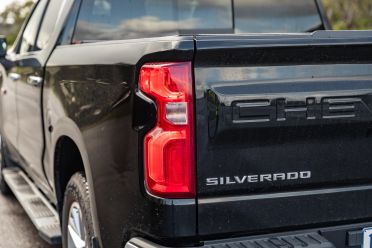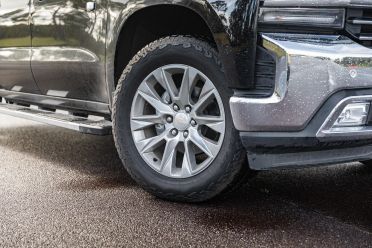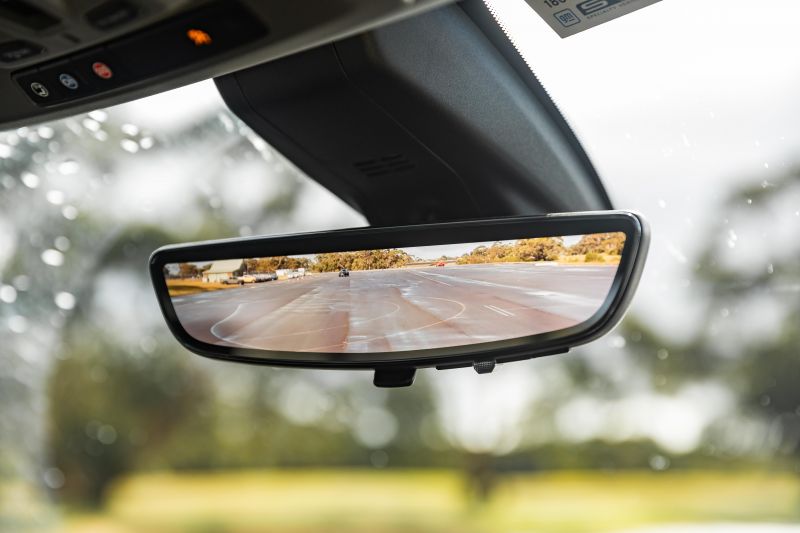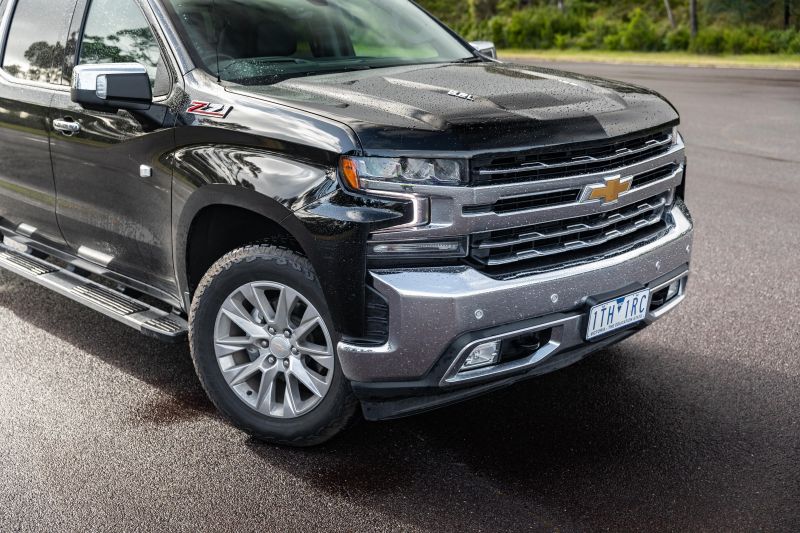Along with the Ford F-150 and the Ram 1500, the Chevrolet Silverado is a mainstay in the pickup truck world.
Although the Silverado badge has only been around since 1998, Chevrolet has been duking it out with Ford and Dodge since World War 1.
In Australia, it’s beaten its arch rival from the Blue Oval to the punch.
The Silverado launched locally through GMSV in 2020, imported in left-hand and remanufactured to right-hand drive by Walkinshaw, following in the footsteps of the Ram 1500 that launched locally in 2015. Ford won’t have the F-150 here until the middle of 2023.
On test here is the soon-to-be replaced Silverado 1500. An update is coming with a bigger touchscreen and a massaged look, but the mechanicals under the skin will remain the same.
With a V8 engine, a cabin with space for four burly tradies to sit comfortably, and a braked towing capacity that’d make a Toyota HiLux blush, the Silverado is an appealing beast on paper.
It’s also a big beast, though, more at home on open Texan highways than in the hustle and bustle of a city like Melbourne.
Is bigger better, or is the Silverado more truck than Australia can handle?

How much does the Chevrolet Silverado LTZ Premium cost?
The Silverado 1500 LTZ Premium with Technology Package on test here is priced at $114,990 before on-roads, up $8000 compared to the tougher-looking Trail Boss sitting below it in the range.
The updated 2023 LTZ coming in the second quarter of next year has been hit with a price rise and will kick off at $121,000 before on-roads.
Although it’s due for a price hike, the Silverado should still undercut the latest DT Ram 1500. The equivalent spec to our LTZ is the Laramie, priced at $123,900 before on-roads – or $128,850 with the RamBox storage system fitted.
Ford hasn’t yet priced its F-150 pickup for Australia.
What is the Chevrolet Silverado LTZ Premium like on the inside?
It’s absolutely massive. The dual-cab utes we’re used to in Australia are generally a bit cramped in the rear, and you wouldn’t want to end up stuck on the middle seat for long.
At 2063mm wide and 1915mm tall it’s 145mm wider and 31mm taller than the new Ford Ranger, and it shows inside.
Up front, it feels like you’re sitting in a different postcode to your passenger, and it’s possible to sit three adults in the back with acres of legroom, headroom, and space between the seats. The only downside is the fact you can’t punish the apprentice by sitting them in the awkward middle seat, such is the space.
Although it’s big, the front of the Silverado doesn’t feel particularly sophisticated. The screen looks tiny perched in its matte black housing, and the black buttons on the dashboard are logically laid out but feel a bit basic.
The fact the Silverado features plenty of buttons will no doubt endear it to old-fashioned pickup fans, and the learning curve is very shallow. The Ram 1500 is far more modern inside though, which counts for something at this price.
Infotainment comes courtesy of an 8.0-inch infotainment system running GM software that’ll be familiar to anyone who’s sat in the last ZB Holden Commodore. The wireless smartphone mirroring worked reliably, and hopping around the menus is simple enough.
General Motors persists with a cheap-feeling pair of buttons behind the steering wheel for volume and track skipping.
Facing the driver is a pair of analogue dials, which flank a trip computer screen that shows your speed and driving data, and offers digital gauges showing your oil pressure, fuel level, battery voltage, and water temperature.
There’s also a head-up display, but it always felt obscured by its housing from my driving position. It feels as though the HUD hasn’t been properly remanufactured from left- to right-hand drive, which is disappointing given the rest of the cabin feels nicely screwed together.
The dashboard lines all match up, the trim didn’t creak or groan over uneven surfaces, and the materials themselves feel nice enough. It’s not a Mercedes-Benz S-Class inside, but the leather wheel, generously-padded front seats, and cushy armrest all make the Silverado feel a class above smaller dual-cab utes behind the wheel.
Speaking of which, the driving position is downright excellent. The view over other road users is commanding, and there’s so much room to get comfortable that, even at six-seven, there was more room to slide the driver’s seat.
It’s a winner if you’re whiling away hours on the road.
Visibility out is decent from the oversized mirrors, and the camera-based rear-view mirror makes it much easier to know exactly what’s behind you given the amount of tray protruding from the cab.
Speaking of the tray (covered by a powered roller shutter), it features eight tie-down points and a solid-feeling spray-in bed liner. If you’re planning to use the full capacity, the roller shutter does eat somewhat into usable space at the back of the cabin, however.
It measures up at 1780mm long (1400mm from roller shutter), 1490mm wide (1280mm between arches), and 590mm deep.
It’s larger and more usable than the tray in a Ranger, for example, but it’s worth bearing in mind the 756kg payload is down on what you get in most diesel dual-cab utes in Australia. Chevrolet also doesn’t offer an equivalent to the fancy RamBox system on offer in its arch rival, the Ram 1500.
What’s under the bonnet?
Power in the Silverado comes from a naturally-aspirated 6.2-litre V8 petrol engine making 313kW of power and 624Nm of torque. That’s right, no small-displacement diesel here.
A 10-speed torque converter automatic is standard, complete with a column shift and “+ and -” buttons for manual shifting.
The Silverado features a four-wheel drive system capable of running in two- or four-wheel drive, or in an automatic all-wheel drive mode suitable for sealed surfaces. There’s a mechanical locking rear differential as standard.
Claimed fuel economy is 12.3 litres per 100km on the combined cycle, we saw 11L/100km on an unladen highway run.
The fuel tank holds 91 litres, and the Silverado drinks 91 RON regular unleaded.
With a 4500kg braked towing capacity, the Silverado has 1000kg up its sleeve over smaller (unmodified) dual-cab utes like the Toyota HiLux and Ford Ranger.
The truck’s kerb weight is 2544kg, its payload is 756kg, gross vehicle mass (GVM) is 3300kg, and gross combination mass (GCM) is 7160kg.
How does the Chevrolet Silverado LTZ Premium drive?
Big and relaxed, with an under-stressed naturally-aspirated V8 engine under the bonnet, the Silverado feels old-school in all the right ways.
It also has a column shifter that feels old-school in all the wrong ways, but we digress.
The 6.2-litre V8 engine fires quietly and settles into a relaxed idle, and offers more than enough shove down low to get this 2550kg truck up and rolling faster than you’d expect. The 10-speed automatic slurs seamlessly from gear-to-gear, to the point where you don’t really notice what ratio you’re using.
It’s a talented cruiser, with the engine humming along at just 1250rpm with cruise control locked on 100km/h, and minimal wind and road noise permeating the cabin.
The ride is better than what’s accepted in smaller dual-cab utes, thanks in no small part to the considerable 3744mm wheelbase, but there’s no escaping the fact this is still a ladder-frame truck at times.
For the most part it steamrolls the road into submission nicely, but bigger highway crests can make the Silverado feel a bit floaty, and bigger hits shudder through the frame with no load in the tray.
Ram now offers air suspension on the rear axle of its Silverado rival, the 1500, and it’ll be interesting to see if Chevrolet follows suit given the potential benefits on offer.
Although it’s a bit burbly in the cabin, you don’t hear the engine too much unless you really put your foot down – at which point it makes a noise that makes the clattery diesels in most dual-cabs feel downright dismal. With that said, the Ram 1500 makes a bit more noise again based on our testing at Lang Lang, both inside and out.
With a 6.5s time on the 100km/h sprint, it gets up and dances in a straight line. Although it’ll chirp the rear tyres in two-wheel drive, you’re able to flick into an all-wheel drive 4A mode that offers better traction on slick tarmac.
There’s also a more traditional 4H mode for unsealed surfaces, and low-range. The rear differential can’t be manually locked, but can lock itself.
It surfed a wave of V8 torque up the loose hill at our Ute Mega Test, barely breaking a sweat as it waltzed through a challenge that stumped a number of smaller, less expensive dual-cab utes.
The car also showed impressive body rigidity on the offset mogul test, and the rear differential lock engaged itself to push the car out of those same moguls when required.
Being able to manually engage it would be better again, given having more control gives you more options off-road, but the fact it’s fitted in some form is better than not at all.
A more serious ZR2 off-roader is coming with the new Silverado in 2023, and it’ll be interesting to see how it stacks up relative to this more road-oriented version when it touches down.
GMSV, like Ram, argues the Silverado is perfect for anyone who lives life with a trailer hitched up.
You’ll have to wait until our Ute Mega Test goes live to see how it performed alongside the diesel four- and six-cylinder mainstays on the Australian sales charts, but suffice it to say the Silverado put in a good showing.
What do you get?
Specifications for the outgoing model on test here are below. For a breakdown of what’s on offer in the upcoming mid-life update, check out our price and specs here.
Silverado LT Trail Boss highlights:
- 8.0-inch touchscreen infotainment system
- Wireless Apple CarPlay, Android Auto
- Keyless entry and start
- Remote start
- Cloth upholstery
- Heated, leather-wrapped steering wheel.
- 10-way power front seats
- Heated front and rear seats
- Dual-zone climate control
- Automatic LED headlights
- Automatic high-beam
- Power tailgate
- 6-speaker sound system
- 18-inch black-finish alloy wheels
Silverado LTZ Premium adds:
- Leather upholstery
- Ventilated front seats
- Power sunroof
- Wireless phone charging
- Autonomous emergency braking
- Lane-keep assist
- Surround-view cameras
- Adaptive cruise control
- Bose 7-speaker sound system
- 20-inch chrome-finish alloy wheels
Is the Chevrolet Silverado LTZ Premium safe?
Like the Ram 1500, the Chevrolet Silverado remains unrated by ANCAP.
All models feature:
- Blind-spot monitoring
- Rear cross-traffic alert
- Front, rear parking sensors
Silverdao LTZ Premium adds:
- Autonomous emergency braking (AEB)
- Lane-keep assist
- Surround-view cameras
- Adaptive cruise control
How much does the Chevrolet Silverado LTZ Premium cost to run?
The Chevrolet Silverado is covered by a three-year, 100,000 kilometre warranty. GMSV does not offer capped-price servicing.
CarExpert’s Take on the Chevrolet Silverado LTZ Premium
There’s a lot of hate out there for full-sized trucks like the Silverado, and a part of me understands it.
It really is enormous, and the naturally-aspirated V8 engine is a thirsty beast when constrained by traffic and urban speed limits. But writing this truck off because it’s not at home in town is missing the point.
Not only is it significantly bigger inside than a Ranger or HiLux, it blows small dual-cab utes out of the water when a heavy load is hitched up. If you spend lots of time on the open road with a horse float or boat on the back, it makes a lot of sense.
Throw in the fact it has space for five adults inside, feels effortless on the highway, and is far rarer than most dual-cab utes, and it’s easy to see the appeal.
The update due in 2023 will likely enhance its appeal further, given interior technology is one of its weak points.
Click the images to view the full gallery





